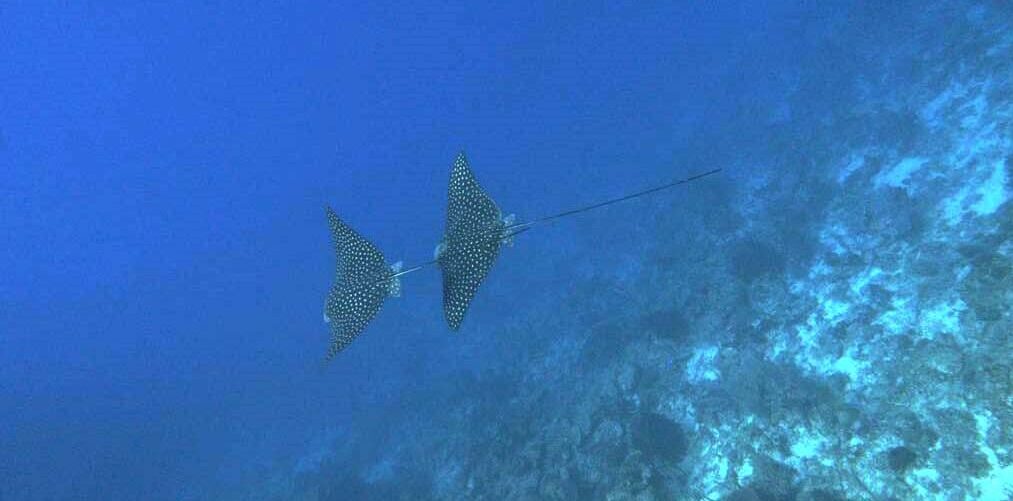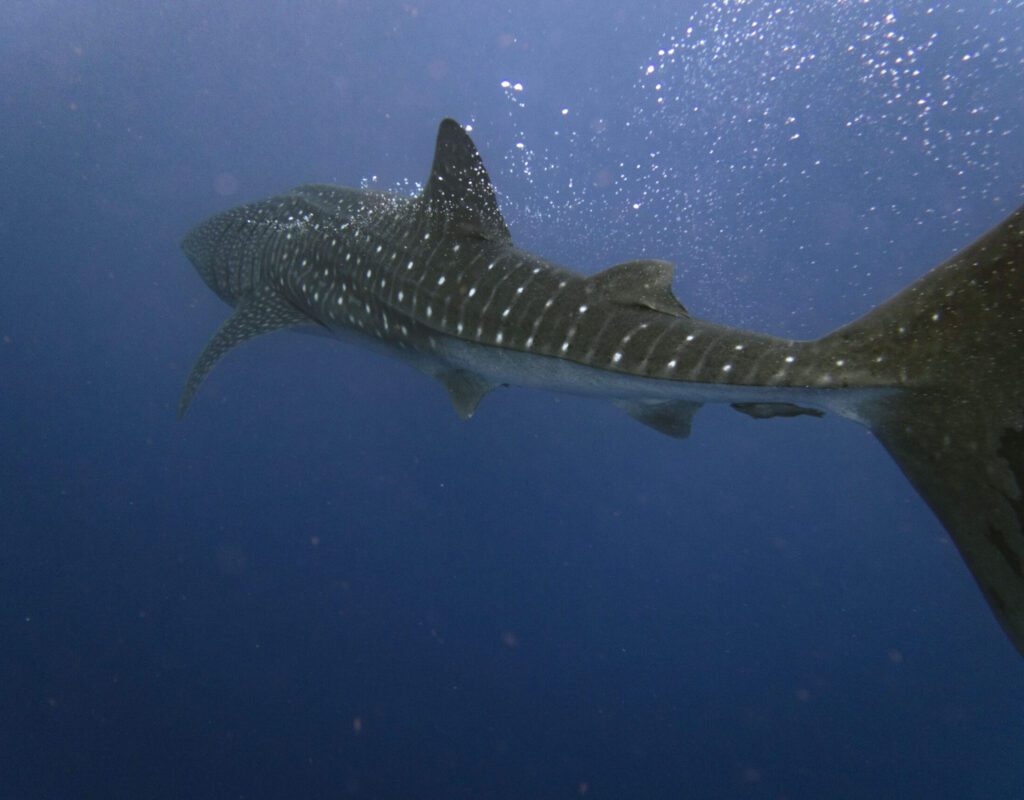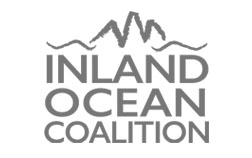July, 2023
Can You Dive With Whale Sharks in Roatán?
Roatán is definitely a hidden gem of the Western Caribbean. And a true divers paradise. With its vibrant coral reefs, diverse marine life, and captivating underwater landscapes, it’s no wonder that divers love visiting this tropical island time after time. Whale sharks can be found on the bucket list of many divers. So you’re probably wondering: can you dive with whale sharks in Roatán? Many articles on the internet will tell you, yes. But in our experience, the answer isn’t quite so simple. So we are on the quest to uncover the truth about if you can dive with whale sharks in Roatán with the help of Gabriela Ochoa. She is a local marine biologist, who has recently founded the marine conservation nonprofit Ilili.
Does Roatán have whale sharks?
A frequently asked question by diving enthusiasts is, “Can I dive with whale sharks in Roatán?” While there have been rare sightings of these magnificent creatures near the island, encounters with whale sharks are exceptionally rare. Gabriela explains the chances of spotting a whale shark in Roatán are “once in a blue moon.” The Sea Lucas project, which has developed an interactive map for shark sighting in Roatán and the Bay Islands, reports only 2 reported whale shark sightings in Roatán since 2009. While numbers might be slightly higher due to lack of reporting, this is the most accurate source of data on Whale Sharks in Roatán. Utila, Roatán’s sister island, is considered a better spot for whale shark encounters – but even they have only had 7 reported sightings since 2009. The most common way for us to spot a whale shark is usually from the boat offshore. This means that encounters are very unpredictable and far out in the ocean. For this reason, most encounters end up being snorkel ones.
What is the best time of the year to see whale sharks?
Whale sharks are migratory creatures, traveling vast distances in the search of food and suitable breeding grounds. The presence in any given area is directly influenced by factors such as ocean currents, food availability and migration routes. Contrary to common belief, whale sharks are not vegetarian and feed on zooplankton as well. They have been observed to follow spawning aggregations of fish. Some bigger fish populations such as snappers are usually spawning during a certain season. Because of this, whale sharks are more frequently sighted between December to March around Roatán. Unfortunately, the depletion of fish populations in recent years has resulted in less frequent whale shark encounters in many places – including Roatán.
Diving responsibly with whale sharks in Roatán
While the desire to dive with whale sharks is understandable, it is vital to prioritize their natural patterns and habitats. As migratory species, these magnificent creatures require protection and conservation efforts to ensure their survival and to avoid any disturbance that may disrupt their delicate ecosystem. Unfortunately, many sites around the world that specifically promote whale shark diving might end up overwhelming and leaving these shy giants feeling stressed. At Sun Divers, we believe in practicing responsible and sustainable diving. If there ever is a whale shark sighting in Roatán, you can be sure we will approach it with utmost care and respect.
Unveiling Roatán’s marine treasures
It is not commmon to see whale sharks while diving in Roatán, but the island still offers an array of other captivating marine life encounters. As you explore Roatán reef sites, be prepared to experience a breathtaking variety of wildlife. In Roatán, divers are lucky to frequently encounter turtles, rays, and even some large marine mammals such as dolphins and pilot whales. There is rarely a ‘Turtle Tuesday’ in Roatán where a turtle isn’t showing its face. Of course, there is always an element of surprise and we can never guarantee the sight of specific wildlife while diving.

Two eagle rays are soaring through the waters in Roatán, Honduras.
Contribute to marine conservation while diving in Roatán
Eagle rays are among the stars of Roatán’s underwater world. These magnificent creatures, with their expansive wings and mesmerizing patterns, leave divers spellbound. Spotting an eagle ray gracefully gliding through crystal-clear waters is an experience that will be engrained in your memory forever. Monitoring and mapping of marine animals such as eagle rays and sharks is an important aspect of conservation. For this reason, it is helpful if you take pictures and report your sightings. “There is a lot of power in citizen science. Just contributing a picture can go a long way and has a great positive impact,” Gabriela said. Check out our guide on how to help with conservation.
Looking for a cool way to contribute to conservation while diving? Consider our RMP Coral Ambassador program!
In short – Are there whale sharks in Roatán?
While the chances of diving with whale sharks in Roatán may be rare, this marine paradise offers an abundance of incredible wildlife experiences. Keep an open mind and embrace the underwater wonders that await you. From elegant eagle rays to the vivid diversity of coral reefs, every dive is an opportunity to connect with the ocean’s beauty and contribute to its conservation. By practicing responsible diving, supporting local conservation programs, and spreading awareness about the fragility of marine ecosystems, we can together help protect Roatán’s natural heritage for years to come.











